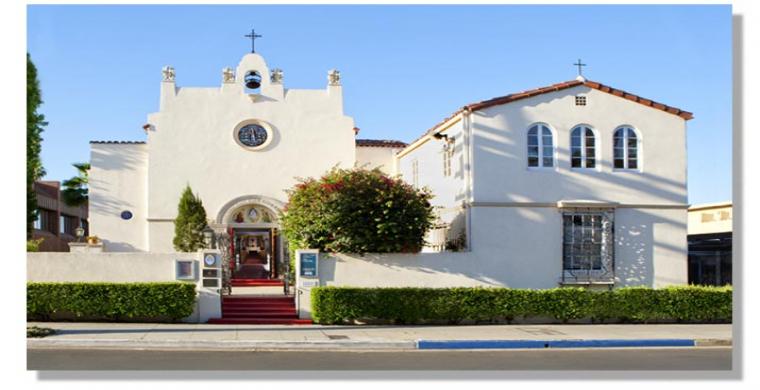Court of Appeals Says Trial Court Should Not Have Abstained From Ruling on Dispute That Split Hollywood Church
St. Mary of the Angels Parish v. Anglican Church in America goes back to Los Angeles Superior Court
By KENNETH OFGANG
Metropolitan News-Enterprise
www.metnews.com/articles/2014/chur072814.htm
July 28, 2014
A dispute as to control of a nearly century-old Anglican parish in Hollywood can be resolved under neutral legal principles, the Court of Appeal for this district has ruled in sending the case back to the Los Angeles Superior Court.
Div. Four ruled Wednesday that Superior Court Judge Michael P. Linfield erred in dismissing a group of suits regarding St. Mary of the Angels’ Parish on the ground that the cases presented ecclesiastical issues that cannot be resolved by a civil court.
On remand, the appeals court said, the judge will have to determine the validity of a 2012 vote by the parish, a religious corporation under California law, to disaffiliate from the Anglican Church in America.
Evidence showed that a majority of the members (including the rector, or spiritual leader, and a majority of the vestry, an elected board of directors) wanted the parish to pursue reunification with the Roman Catholic Church. Other members wanted the parish to remain with the Anglican Church.
The parish conducted a formal vote in May 2011 to determine whether to reunify with the Catholic church. Eighty-one percent voted in favor; a subsequent vote was conducted on Jan. 22, 2012, and 83 percent voted in favor of reunification.
The parent church responded by ousting the rector and placing a new clergyman in charge. He in turn notified four members of the vestry that they were no longer entitled to serve—one because she was married to a member of the clergy, and thus ineligible, and the others because they had defied instructions to turn over minutes of a meeting.
In July 2012, the vestry—including the four members whom the new rector purported to remove—voted to submit to the membership amendments to the articles of incorporation and bylaws formalizing the split from the Anglican church. A week later, the members voted, again by a huge majority, in favor of the amendments.
This led to the filing of the fourth in a series of lawsuits between the two sides.
In order to rule on the lawsuits, Linfield said, he would have to determine which parishioners comprised the legitimate board of directors, and which members were “communicants in good standing’ and thus entitled to vote under St. Mary’s by-laws.
He concluded that the case was not “simply one of property rights which the court can resolve using ‘neutral principles of law,’” and that the “determination of who is the true Rector of St. Mary’s Parish, and who can control St. Mary’s Parish property, rests ‘exclusively [with] the highest ecclesiastical tribunals of the Church,’” to which the trial court had to defer.
The Court of Appeal disagreed. In an unpublished opinion by Justice Thomas L. Willhite Jr., the panel said the case could be resolved under neutral principles of law, applying state Supreme Court precedent.
Citing state Supreme Court cases involving the Episcopal Church, the justice explained that “if resolution of a property dispute involves a point of doctrine, the court must defer to the position of the highest ecclesiastical authority that has decided the point,” but that courts may apply neutral legal principles if they can do so “without reference to church doctrine.”
Willhite wrote that according to the church’s by-laws, members of the vestry can only be elected by parish members at an annual meeting, or by the vestry itself if there is a vacancy between annual meetings. There is no provision in the bylaws or in the parent church’s governing documents that allows the rector to appoint members to the vestry, he noted.
He agreed with the trial judge that the validity of the rector’s removal by the parent church was an ecclesiastical question. But the trial court can still decide, based on the relevant corporate documents, who the members of the vestry are, and who is qualified to vote on a bylaws amendment, the justice said.
If the trial court determines that the bylaws vote was valid, he added, the validity of actions subsequently taken by the Anglican hierarchy is irrelevant, because its authority over St. Mary would have terminated as of the date of the vote.
Because the trial court bifurcated proceedings and never formally reached the issue of whether the vote was valid, judgments could not be entered in favor of the elected vestry without giving the opposing parties an opportunity to present evidence to support their assertion that the vote on the amendment was “illegal,” Willhite said.
This case is The Rector, Wardens, and Vestrymen of St. Mary of the Angels’ Parish v. Anglican Church in America, B248112.














